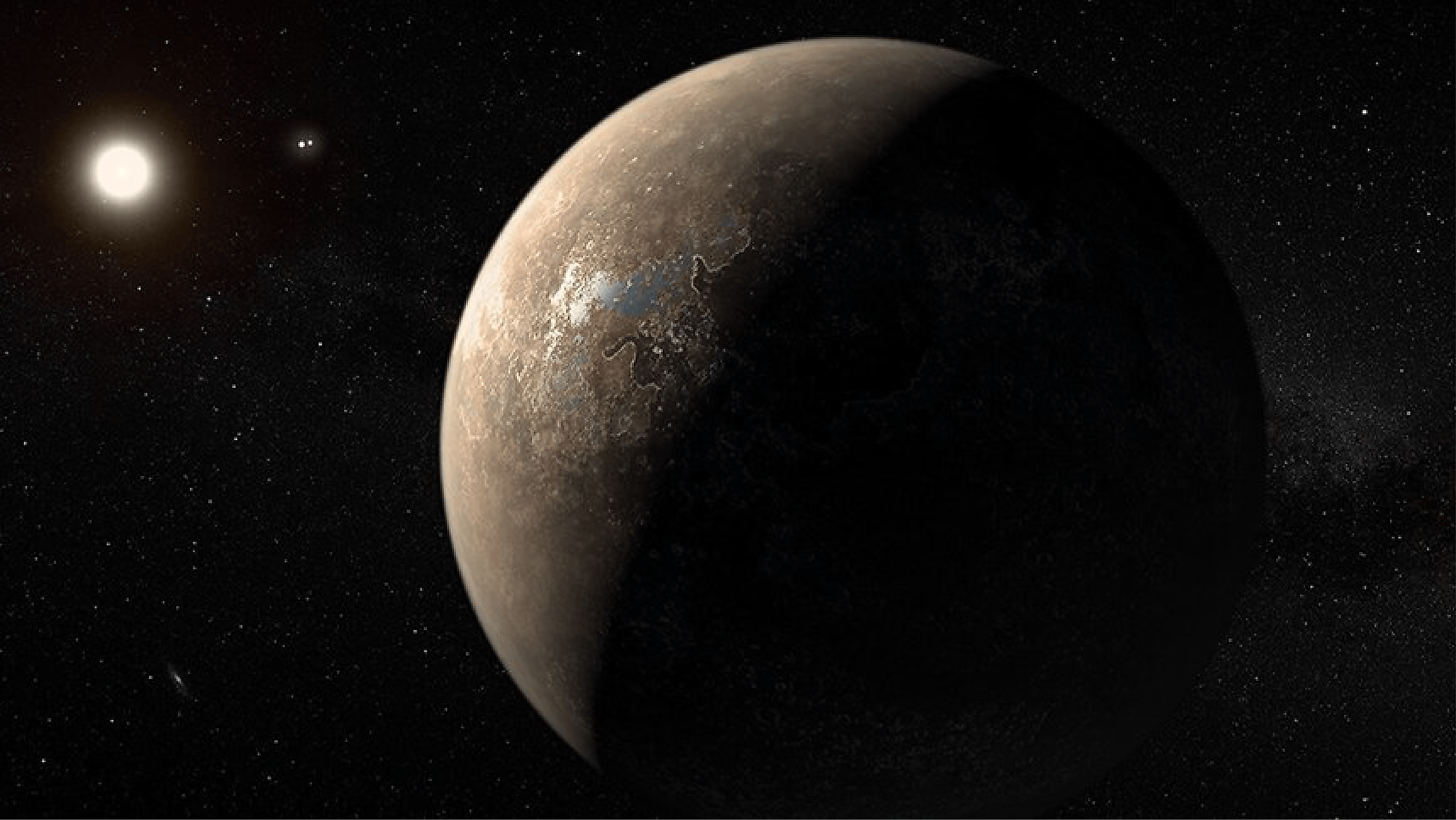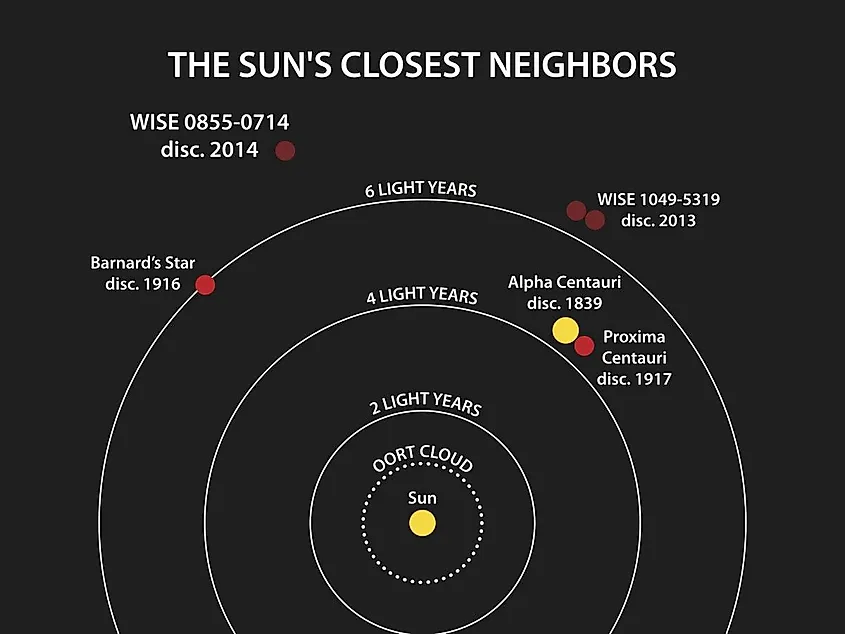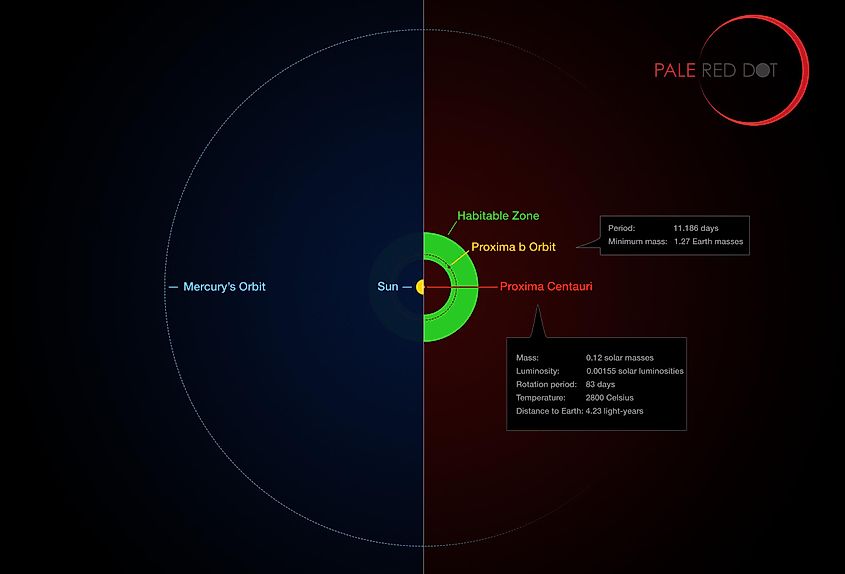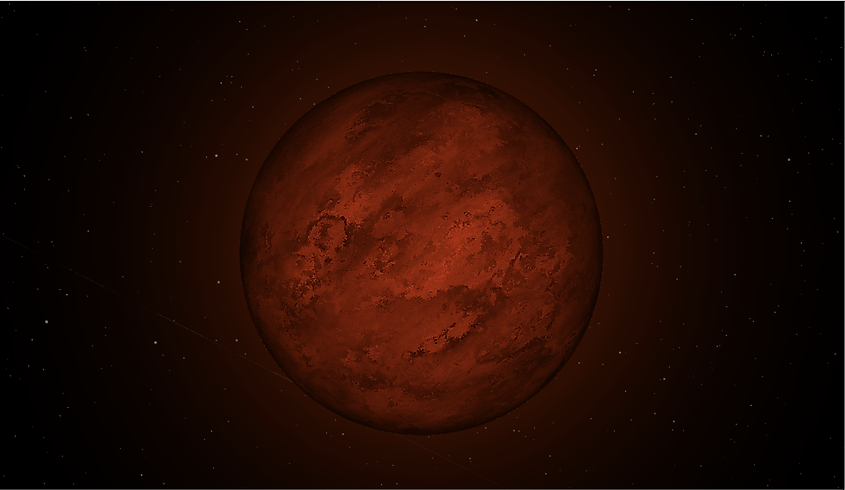
Proxima Centauri b
In the last 30 years, the science of finding exoplanets has exploded. Since the first exoplanet was discovered in 1996, scientists have confirmed the existence of thousands more. Amazingly, the nearest exoplanet to our solar system also happens to be a potentially habitable, Earth-like world. The star Proxima Centauri is the closest star to our solar system at only 4.2 light-years away.
Contents:
- What Is Proxima Centauri b?
- Physical Properties Of Proxima Centauri b
- Orbit And Rotation
- Atmosphere And Surface Conditions
What Is Proxima Centauri b?
Proxima Centauri is a red dwarf star that is far smaller and dimmer than our sun. The star is so dim that it is not visible to the naked eye despite being the closest star to the sun. Red dwarf stars are the most common type of star in the universe, and they also happen to almost always have planets. Most of the exoplanets that have been discovered have been found around red dwarfs, and most Earth-like planets have also been found around red dwarfs. It is no surprise then that astronomers had been searching for an exoplanet around Proxima Centauri for years, yet every search turned out futile. Then in 2016, astronomers working at the European Southern Observatory (ESO) in Chile found evidence that suggested a planet was in orbit around Proxima Centauri. Later that year, scientists confirmed that Proxima Centauri is indeed orbited by a terrestrial planet in the habitable zone of Proxima Centauri. The exoplanet was designated as Proxima Centauri b.
Physical Properties Of Proxima Centauri b

Since the star Proxima Centauri is far smaller than our sun, its habitable zone exists much closer to its surface. For a planet to orbit within the habitable zone of Proxima Centauri, it must be closer to its star than even Mercury is to the sun. Proxima Centauri b orbits its star at only 4.5 million miles (7.2 million kilometers). That’s about 20 times closer than the Earth orbits the sun and nearly 60-million miles closer than Mercury. It takes Proxima Centauri b roughly 11 Earth days to orbit its star. Since Proxima Centauri is so much smaller and colder than the sun, this places Proxima Centauri b in the habitable zone. Proxima Centauri b has an estimated mass of about 1.173 Earths, making it one of the most Earth-like worlds to be discovered. However, the diameter of Proxima Centauri b has proven difficult to determine, and the exact size of the planet remains unknown. The precise composition of Proxima Centauri b is also a mystery, as its mass could allow the planet to either be rocky or partially gaseous.
Orbit And Rotation

Proxima Centauri b does not orbit its star in front of us. That is to say, if you were to look at Proxima Centauri head-on, you would be unable to see Proxima Centauri b as it does not pass in front of its star from our perspective. This makes predicting its orbit difficult, and astronomers do not know whether or not Proxima Centauri b has a nearly circular orbit or a highly elliptical one. If Proxima Centauri b has a roughly circular orbit, it is likely tidally locked with its star and does not have a rotation, meaning that one side of the planet would always be facing towards the star. If Proxima Centauri b is tidally locked, it is unlikely that Proxima Centauri b could be a habitable planet, as temperatures on the dayside would be far too hot for liquid water to exist. On the night side, they would be far too cold. However, if Proxima Centauri were able to hold onto a significant atmosphere, air circulation could potentially create a band of habitability that exists at the boundary between night and day. It is unknown whether a planet could maintain an atmosphere while being tidally locked around a red dwarf star. If Proxima Centauri b happens to have an orbit with a high eccentricity, it may not be tidally locked. If this is the case, the prospect of habitability becomes more likely.
Atmosphere And Surface Conditions

Since Proxima Centauri b is so close to its star, it would be tremendously challenging to image the planet directly. For now, astronomers rely on computer-generated models to predict certain conditions in the atmosphere and on the surface. Proxima Centauri b receives vastly more radiation from its star than the Earth does from the sun. Models predict that it is unlikely for Proxima Centauri b to hold onto a significant atmosphere given the amount of radiation it receives. Radiation from Proxima Centauri would simply evaporate the atmosphere. However, Proxima Centauri b could have a strong magnetic field protecting the atmosphere.
Furthermore, if Proxima Centauri b formed in its current orbit, the planet has not always existed within the habitable zone. Proxima Centauri would have been hotter before becoming a main-sequence star, so Proxima Centauri b may have formed too close to its star and remained there for many millions of years. It would have been difficult for Proxima Centauri b to hold onto any water, and it’s more likely that the planet experiences a runaway greenhouse effect. Models predict that the surface of Proxima Centauri b is likely more similar to either Mercury or Venus than Earth. Unfortunately, this information suggests that Proxima Centauri b is unlikely to be home to alien life. However, since so much is unknown, it is still entirely possible that somehow, Proxima Centauri b is a habitable world.
| Diameter | Unknown |
|---|---|
|
Mass |
1.173 Earths |
|
Length of year |
11 Earth days |
|
Length of day |
Unknown, zero if tidally locked |
|
Distance from Earth |
4.2 light years |
|
Distance from Proxima Centauri |
4.5 million miles (7.2 million kilometres) |
|
Discovery date |
August 24, 2016 |
|
Discovered by |
European Southern Observatory |











